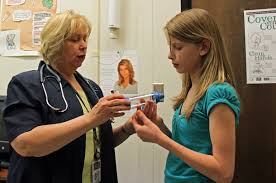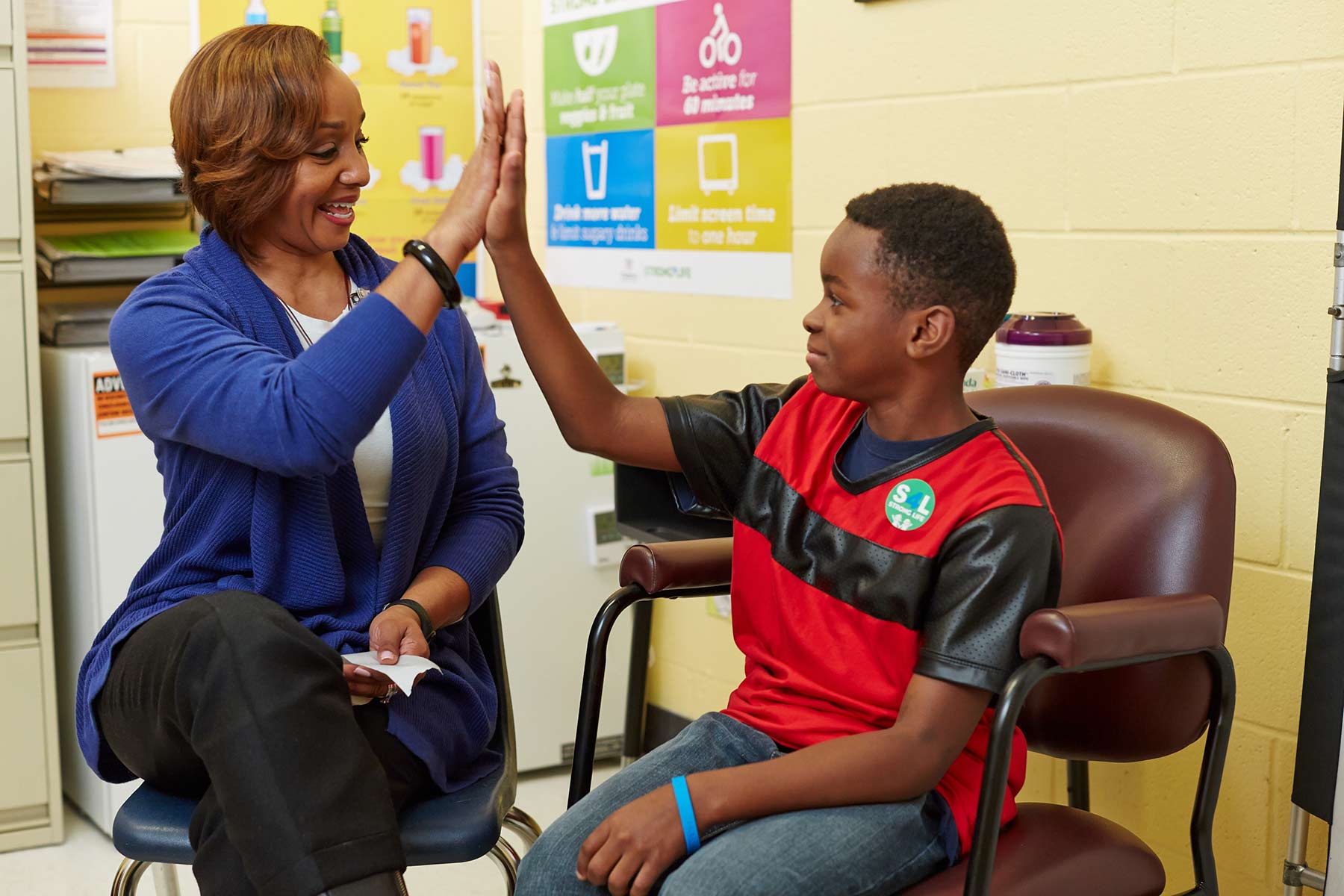The Whole School, Whole Community, Whole Child (WSCC) model outlines the vital role School Health Services has in coordinating health policies, processes and practices that support each student to achieve her academic potential. The purpose of School Health Services is to ensure that all students are healthy and ready to learn.
In most school settings the school nurse is the “frontline leader” for delivering and ensuring the daily health and safety needs of students are being met. A well-functioning School Health Services staff works in partnership with the district staff, students, parents and the students’ primary healthcare providers to promote the health of the students and maintain a healthy and safe school environment.
 The school nurse serves as an important bridge between healthcare and education. The National Association of School Nurses (NASN) recommends that while in school, every child, every day, has access to a full-time registered professional school nurse. School nurses provide prevention education that promotes physical and mental health, and serve as case managers bringing families, schools and healthcare providers together. Increased school nurse staffing has resulted in improvements in immunization compliance, vision correction and the identification of life-threatening conditions.
The school nurse serves as an important bridge between healthcare and education. The National Association of School Nurses (NASN) recommends that while in school, every child, every day, has access to a full-time registered professional school nurse. School nurses provide prevention education that promotes physical and mental health, and serve as case managers bringing families, schools and healthcare providers together. Increased school nurse staffing has resulted in improvements in immunization compliance, vision correction and the identification of life-threatening conditions.
The school nurse is a vital member of an interdisciplinary team, bringing the health expertise necessary to develop a student’s Individualized Education Plan (IEP) or 504 Plan designed to reduce health barriers to learning. Numerous studies demonstrate that a student’s health is directly correlated to his ability to learn. Children with unmet health needs have difficulty engaging in all aspects of the academic process.
In 2014, 32% of children in New Jersey were low-income, defined as below 200% of the Federal Poverty Level (2016 New Jersey Kids Count). Children from lower income families have difficulty accessing medical treatment for chronic diseases. These students and their families increasingly rely on access to school nurses for their basic care.
Over the past 30 years, there has been a significant increase in children diagnosed with chronic conditions. Currently, about 25% of students are estimated to suffer from chronic conditions such as asthma, diabetes, obesity and epilepsy. Helping students manage chronic conditions decreases absenteeism and improves their grades. Additionally, medically fragile children are coming to school in increasing numbers, requiring complex treatments. Compounding this surge of medical need is the 50% increase in children with food allergies and the influx of students exposed to infectious diseases such as polio, MERS and measles as a result of global travel.
NASN recommends a school nurse to student ratio of 1:750 in a general population school setting and 1:125 in more complex school healthcare settings. In 2010 the average ratio in New Jersey was 1:533. New Jersey law requires at least one certified school nurse in each district. While a significant number of districts employ more than one school nurse, unfortunately there are still some districts where the school nurse is responsible for more than one school.
As an advocate for the individual student, the school nurse provides education and skills that promote self-empowerment, problem-solving, effective communication and collaboration. The school nurse advocates for safety by developing school safety plans to address bullying, school violence, and the multitude of emergency incidents that may occur at school on any given day.
Health Services, and more specifically, school nurses are an essential component of the WSCC model and vital to the overall health and wellness of the entire school community.
Sources:
School Health Services: The Bridge Between Health and Education




